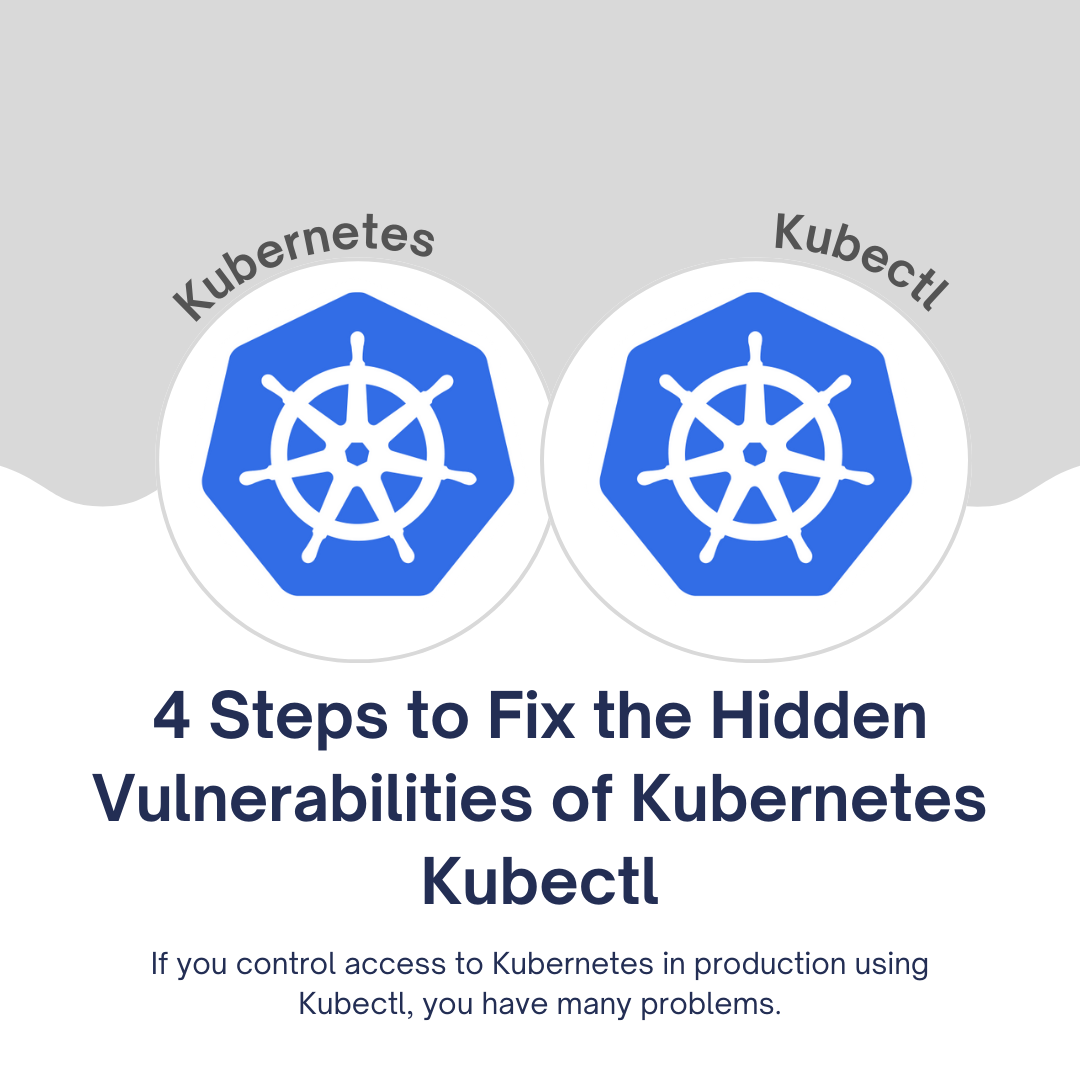Strengthening Kubernetes kubectl Access: Four Essential Steps

If you are responsible for managing access to Kubernetes in a production environment using kubectl, you are likely aware of the various challenges that come with it. In this article, we will delve into the five most significant problems associated with this approach, explore their implications, and discuss practical ways to mitigate their impact. The ultimate goal is to make Kubernetes access not only more secure but also more efficient.
The Five Biggest Problems
Before we dive into the solutions, let's first identify the five major issues surrounding Kubernetes kubectl access:
1. Fast Access for Efficient Production
Fast access to the right engineers in a production environment is crucial for maintaining product speed. This access is essential for troubleshooting, bug fixes, and incident resolutions, as they all depend on quick data access.
2. Security Risks in Access Granting
Unfortunately, many teams employ inadequate methods for granting access to Kubernetes, leading to significant security risks for the business or inefficient workflow processes.
3. Building Infrastructure Pain
Constructing infrastructure for Kubernetes access using kubectl can be a painful and error-prone task, making it challenging for teams to manage effectively.
4. Hidden Vulnerabilities
The missing components in Kubernetes access management often hide vulnerabilities that are seldom discussed but can serve as significant attack vectors. These vulnerabilities include:
- Single Sign-on & Multi-Factor Authentication (MFA)
- Audit Trails and Personally Identifiable Information (PII) protection
- Compliance with regulations such as GDPR, PCI, SOC2, and HIPAA
- Enhancing the Developer Experience
Solutions to the Problems
Now that we've identified the key problems let's explore the solutions:
1. Implement the 80/20 Rule
One effective approach is to follow the 80/20 rule, which involves gradually introducing essential features to address the issues. This approach allows you to make significant improvements without overwhelming your team. Here's how:
- Utilize Existing Systems: If you already use tools like Google Workspaces, you may not need to set up a separate LDAP directory for user management. Leverage what you already have.
- Simplify Single Sign-on (SSO): Implementing SSO for SSH access and recording Kubernetes sessions can be challenging. Consider using Cloud Shell solutions from AWS or Google Cloud or tools like Runops to streamline this process. Start with integrating Google OAuth to reduce the need for additional tools and avoid long delays.
- Prioritize Features: Focus on the Kubernetes access features that are most relevant to your industry. For companies that require speed and developer experience, prioritize those aspects before addressing audit and compliance features. Conversely, highly regulated businesses should prioritize security and compliance.
2. Embrace Unified Solutions
To reduce complexity, consider adopting unified tools that can manage various aspects of access, including Kubernetes, cloud providers like AWS and GCP, databases, servers, and more. Here's why this approach is beneficial:
- Simplify Management: Using a single tool for all your access management needs can significantly reduce the complexity of your infrastructure. Even if the user experience is slightly compromised, it's often worth it for the convenience of having a centralized solution.
3. Add Friction to Unwanted Access Methods
Sometimes, you need to discourage the use of certain access methods that may be fast but lack the necessary security or compliance measures. Here's how to add friction to these methods:
- Introduce Form Submissions: If your current access method has security issues, consider adding a form submission step to the process. This extra step, which engineers may find inconvenient, can encourage them to opt for more secure methods.
- Jira Requests: For instance, if engineers are accessing resources directly through a web console, make this process more cumbersome by requiring Jira requests. Over time, teams may opt for automated processes, which are more secure and compliant.
By making the right access methods easier and adding complexity to the less desirable methods, you can gradually shift your organization toward better security practices.
In conclusion, addressing the hidden vulnerabilities of Kubernetes kubectl access requires a thoughtful approach that balances security, compliance, and efficiency. By implementing these four steps, you can significantly enhance the security and effectiveness of your Kubernetes access management while mitigating the associated risks and challenges. Remember, it's crucial to adapt these solutions to your organization's specific needs and priorities.
